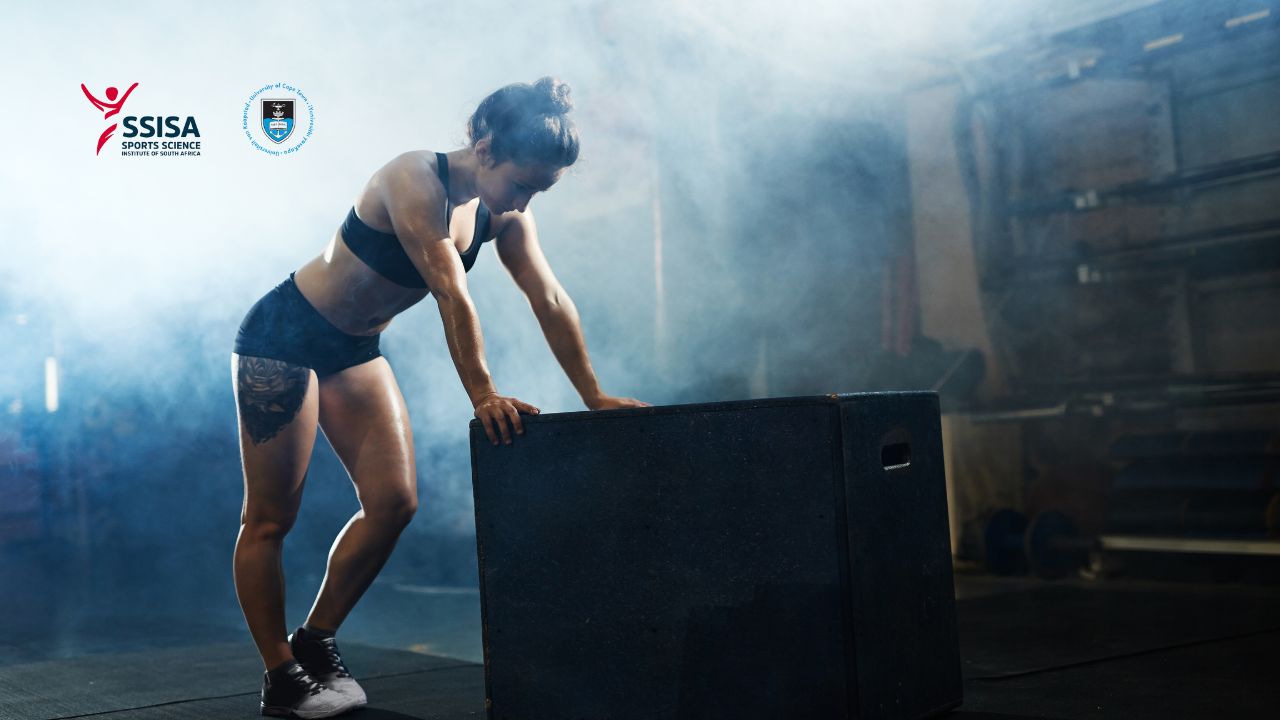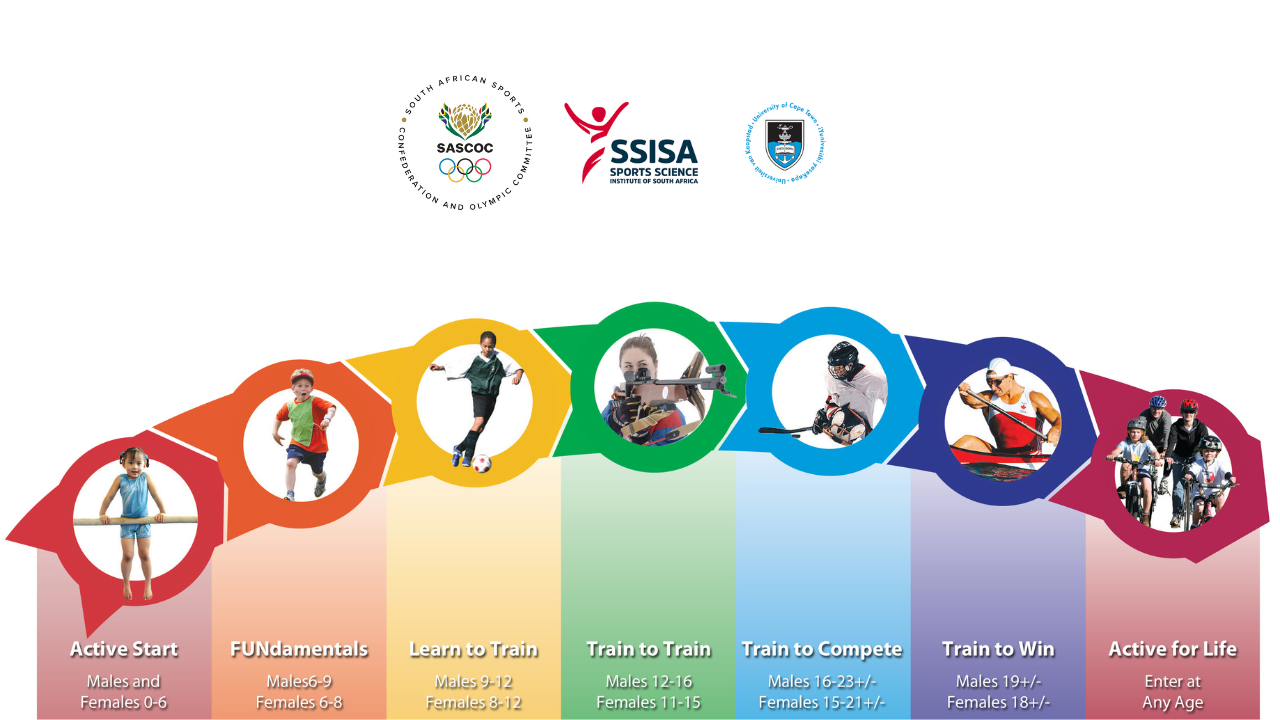The
Long-Term Participant Development (LTPD) model is the guiding plan for South
African sport which describes various stages of development in training and
participation in sport throughout the lifespan. Of importance to this blog
post, the LTPD describes the physical, mental, and emotional development, and
understanding these processes are crucial for aspiring athletes. We unpack the
key components of LTPD as it applies to the physical, mental and emotional development of young athletes.
Physical Development:
The journey of a young athlete begins with the development of fundamental motor skills in early childhood. The building blocks of running, jumping, and throwing are established, alongside the promotion of physical literacy and coordination. Avoiding early specialization and overtraining is suggested as this allows for young athletes to experience a fun and balanced introduction to sport and physical activity. In line with the LTPD, the importance of avoiding early specialization to prevent overuse injuries and foster athletic versatility among young athletes is warranted, however, some sport codes require early specialization such as Artistic Gymnastics, Rhythmic Gymnastics and Synchronized Swimming (1,2), and therefore, if an athlete is certain about their sport career trajectory within a given sport code, then coaches and parents are encouraged to support their athlete accordingly (3).
As children progress into the "Learn to Train" stage, they start to hone sport-specific skills, incorporate age-appropriate strength and conditioning, and continue developing flexibility, balance, and agility. Additionally, identifying and nurturing physical talents is a priority (2). From childhood to adolescence, athletes enter into the "Train to Train" phase, which focuses on the continued development of sport-specific skills. This stage involves more in-depth strength and power training, monitoring and addressing growth-related issues, and preparing young athletes for a competitive environment (dependent on the sport code). Injury prevention and recovery strategies become crucial during adolescence due to growth spurts and muscular development which takes place quite rapidly during puberty (2). If not in an early specialization sport code, when athletes become adults, they enter into the "Train to Compete and Train to Win" stages, where they optimize sport-specific physical attributes, undergo advanced strength and conditioning, and participate in periodized training programmes to achieve peak performance during competition seasons. The maintenance of overall health and physical conditioning is vital for longevity in the sport code of choice (2).

Mental Development:
Mental development, as referenced in the LTPD is as crucial as physical development. During early childhood, the focus is on cultivating a love/passion for the sport through positive experiences, thereby fostering curiosity and creativity, and introducing basic rules and strategies. Young athletes begin to develop focus, concentration, and enhance their attention spans (4). The importance of psychological preparation and mental toughness play a pivotal role in an athlete's development and performance (4). Childhood and adolescence phases of development mark the transition into more advanced mental skills (5). Athletes learn to set goals, visualize success, and stay self-motivated. They develop a growth mindset, resilience, and the ability to cope with setbacks. These lessons are applicable to an athlete’s life outside of sport. In addition, lessons in sportsmanship and respect for opponents are also instilled. During adulthood, the mastery of advanced mental skills are expected, which allows an athoete to manage competition stress and anxiety, having increased focus and concentration, and is able to navigate and cope with both success and failure (2,4,6).
Emotional Development:
Emotional development is central to an athlete's overall growth. In early childhood, creating positive and enjoyable experiences is paramount for continued participation in sport. Emotional control, self-regulation, and a sense of belonging are cultivated through sport participation. It is emphasized in literature that the role that sport plays in fostering emotional development and a love for the sport in an athlete is the most important (6). During childhood empathy and emotional intelligence are introduced, and athletes begin to learn coping skills for dealing with frustration and disappointment that arise during sport. Healthy competition and good sportsmanship are encouraged as per the LTPD, and this leads to a deepening of passion for the sport code of choice (6,7).
During adolescence, athletes learn to manage emotions in high-pressure situations, develop resilience and mental toughness, and enhance their ability to regulate emotions. Leadership and teamwork skills are also honed via direct participation in sport as athletes learn to overcome challenges, losses, wins, and other obstacles outside their sport. When reaching adulthood, athletes are said to be more intentional about the maintenance and upkeep of emotional well-being and motivation. Management of stress and emotional demands that are part of competitive sport is a high priority among high-level competitive youth athletes as they strive for performance and sporting excellence (7).

In summary, the purpose of LTPD is to ensure that athletes receive appropriate training, support, and guidance at every stage of their development, with a focus on their physical, mental, and emotional well-being. The LTPD aims to produce not only successful athletes but also individuals who lead healthier, and more balanced lives. The Long-Term Participant Development plan by SASCOC provides a roadmap to success for athletes, coaches and parents via its three pillars of development —physical, mental, and emotional development—guiding individuals from childhood to adulthood in their quest for athletic excellence. Supported by academic research, the LTPD ensures a well-rounded and holistic approach to athlete development, fostering not just elite athletes but also well-rounded individuals (3).
Empty space, drag to resize
References:
- De Bosscher V, Descheemaeker K, Shibli S. Starting and Specialisation Ages of Elite Athletes across Olympic Sports: An International Cross-sectional Study. European Journal of Sport Sciences [Internet]. 2023 Sep 25;3(5):9–19. Available from: https://www.ej-sport.org/index.php/sport/article/view/100
- Lloyd R, Oliver J. The Youth Physical Development Model: A New Approach to Long-Term Athletic Development. Strength Cond J. 2015;34(3):61–72.
- SASCOC. SA Sport for Life Long-Term Participant Development Model. Pretoria; 2012.
- Beattie S, Hardy L, Cooke A, Gucciardi D. Mental toughness training. In: Skill Acquisition in Sport: Research, Theory and Practice. Taylor and Francis; 2019. p. 255–70.
- Eng AG, Phan JM, Shirtcliff EA, Eisenlohr-Moul TA, Goh PK, Martel MM. Aging and Pubertal Development Differentially Predict Symptoms of ADHD, Depression, and Impairment in Children and Adolescents: An Eight-Year Longitudinal Study. Res Child Adolesc Psychopathol. 2023 Jun 1;51(6):819–32.
- Holt NL. Positive Youth Development Through Sport. 2008.
- Kim J, Tamminen KA. Emotion regulation among competitive youth athletes: exploring the independent and interactive effects of cognitive reappraisal and expressive suppression. Int J Sport Exerc Psychol. 2023;21(3):534–56.





